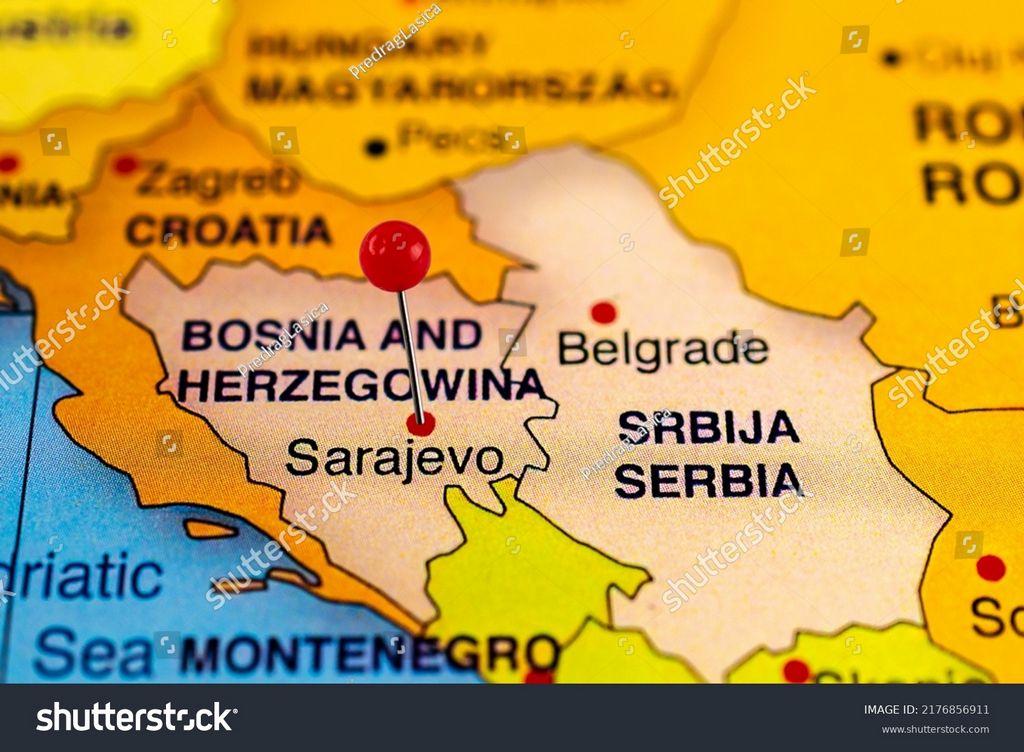Baffled, I reverse. Hadn’t I simply been going through the spruced-up Ferhadija buying street, with its Austrian-style coffee houses and Western style chains? And now, with every step, I feel like I’m diving right into a different universes.
The market has dominated the old town because Footrest policy. The wonderful smell of shisha tobacco fills up the air, steaming coffee is carried past me on ornate copper trays, and the muezzin requires petition. Practically every trade still fits in the network of alleys and courtyards.
At the threshold in between the city center and the old town, two globes meet, yet this is absolutely nothing uncommon in the resources of Bosnia-Herzegovina (www.sarajevo.travel ), since below cultures and faiths, ages and architectural designs in addition to war and tranquility fulfill on virtually every corner.
What to see in Sarajevo
In the old town district alone, 4 religions are stood for with churches – one-of-a-kind in Europe. The Roman Catholic Sacred Heart Cathedral stands at the entryway gateway. The heart of Bascarsija is the Gazi Husrev-Beg Mosque, whose name is laid to rest in a little mausoleum next door (Sarači).
To today, he is considered the daddy of the city, having shaped it through cultural visibility and kindness as very early as the 16th century. Simply a couple of steps away, sheltered by dense trees, stands the old Sephardic synagogue, which today houses the Velika Avlija Gallery, which informs the tale of the Jews in Sarajevo.
The old Orthodox church on the north edge of the Old Town is in a similar way ordinary.Read here https://sarajevomarathon.ba/bs/utrke/5-k-team-run/56 At our site Modern and forgiving Sarajevo shed its virtue during the battle years between 1992 and 1995. My feeling that people have shut this dark phase continues up until I feel like I’m standing in a swimming pool of blood at the Gradska tržnica market hall (Mula Mustafe Basceskije 4 a).
Wherever many people shed their lives in explosive attacks, the harmed concrete was not eliminated however dipped in red paint. Stumbling blocks, called ‚roses,’ were put there.
The Galerija 11/07/95 Museum also sees itself as a stumbling block. It lies inconspicuously in the darkness of the cathedral and handle the Srebrenica bloodbath, and particularly its consequences. Easy yet deeply relocating photographs, several brief movies, and an audio overview explain the national injury (Trg Fra Grge Martića 2).
As the hustle and bustle of the old town spits me out again, I find myself standing in front of the mighty Vijećnica. The bulky, delicately embellished old town hall, constructed in 1894, is just one of one of the most essential structures in the pseudo-Moorish design. It attained notoriety two times: in 1914 throughout the murder effort on Franz Ferdinand and his other half Sophie, which set off the First World War. In 1992, it was itself so badly damaged that its remediation had not been completed until 2014.
Why the scars of war were covered up below of all locations becomes clear in the entrance hall: the sunlight refracts in the glass, flower-decorated dome and allows the elaborately crafted accessories and enhanced columns shine (Zmaja od Bosne 8 b).
Right outside the door is the Ottoman Lantern Bridge, which leads over the Miljacka River right into an additional world. Possibly the one that the majority of carefully mirrors modern-day life: South of the river, domestic buildings and small stores cling to the incline of the local mountain, Trebević. Steep streets and alleys wind upwards until they pave the way to fields, forests, and a footpath that results in the 1984 Olympic Bobsleigh Track 3.
For virtually 2 kilometers, it runs through the forest on the hill plateau. I adhere to the graffiti-decorated channel to the beginning point, which converges a prominent hiking route to the Trebević lookout factor. Mounted by the carefully moving optimals of the Dinaric Mountains, the futuristic Avaz Twist Tower notes the new Marijin Dvor business and government district to the west.
Like a historical counterpoint, the yellow bastion of Žuta Tabija towers over the old town. From up here, one can only think that this valley is home to greater than simply architectural contrasts.
The most effective areas to consume in Sarajevo
Buregdžinica cavity makes the most effective puff bread snails loaded with spinach, cheese, or meat. The cast-iron baking frying pans leave the rock stove practically every min (Mali Bravadžiluk 2). Bosnian pastas in sour cream, cevapcici, or the meat stew muckalica are offered at the waterfront restaurant Inat kuća (Veliki Alifakovac 1).
The small Klopa, with its open cooking area and airy wood inside, is located in a back courtyard of Ferhadija. The food selection likewise caters to vegetarians and allergy patients (Ferhadija 5).
The Barhana bar serves food and rakija (a Bosnian fruit brandy) till the very early hours on two floors. Rakija is served below in 25 various ranges. Walnut and honey (Đulagina čikma 8) is particularly scrumptious.
Holiday accommodation in Sarajevo
Found in a peaceful backstreet, the boutique hostel Franz Ferdinand inhabits a floor of an old structure with urban-style dorm rooms and personal areas (Jelića 4; dorm from euro10.90, double from euro15.90).
A view of the basilica, a large balcony, and an Airbnb host that quickly ends up being a good friend: Adna is an architect with an interest for revamping old furnishings. In her Chic Woody Apartment or condo, visitors can stay in her jobs (euro50 per evening).
The Hotel Europe takes pleasure in an attractive location between the Old Town and Miljacka. Some rooms offer sights of all 4 churches. Amenities include a medspa and the classy ‚Viennese Coffee shop’ (Vladislava Skarića 5; dual spaces from euro133).
Arrival
Lufthansa flies straight from Munich, Eurowings from Cologne/Bonn and Stuttgart. Austrian Airlines connects with a transfer in Vienna.

